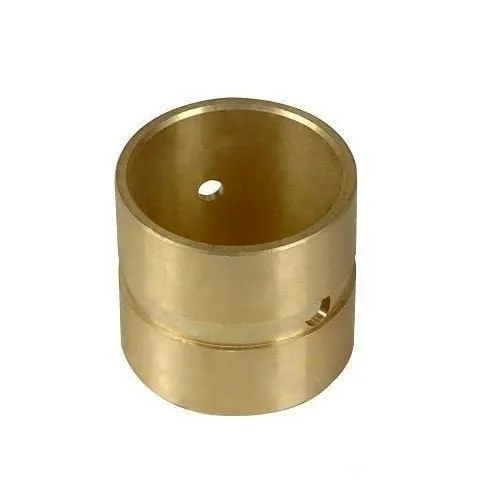Product Name: Heavy Commercial Bushes
Sizes, Applications, Alloys, Specifications, and FAQs
Introduction: Heavy commercial bushes are robust components vital for various industrial applications, known for their durability and reliability under heavy loads. Whether you’re a manufacturer, engineer, or simply intrigued by these heavy-duty components, this comprehensive guide will provide you with all the information you need. In this article, we will delve into the manufacturing process, applications, heavy commercial bush alloys, specifications, technical data, and frequently asked questions about heavy commercial bushes.
Manufacturing Process: Heavy commercial bushes are typically manufactured using processes such as machining or forging. These methods result in durable and reliable components that can withstand extreme loads and challenging industrial conditions.
Sizes: Heavy commercial bushes come in a range of sizes to accommodate diverse industrial applications. Common size ranges include inner diameters from 1/2 inch to 8 inches or more, outer diameters from 1 inch to 10 inches, and lengths from 1 inch to 12 inches or more. Custom sizes can also be produced to meet specific project requirements.
Applications: Heavy commercial bushes find applications in various industries, providing robust support and wear resistance. Some common applications include:
- Construction Equipment: Utilized in heavy machinery like excavators, bulldozers, and cranes to handle demanding construction tasks.
- Mining Industry: Essential for mining equipment, conveyors, and crushers to withstand abrasive materials and extreme conditions.
- Agricultural Machinery: Used in farm equipment like tractors and plows to ensure reliability during farming operations.
- Material Handling Equipment: Employed in forklifts and conveyor systems to handle heavy loads in warehouses and manufacturing facilities.
- Hydraulic Cylinders: Found in hydraulic systems to reduce friction and wear in hydraulic cylinder applications.
Alloys: Heavy commercial bushes are typically made from high-strength materials such as alloy steel, bronze, or synthetic materials. The choice of alloy depends on factors like load-bearing capacity, wear resistance, and the specific application.
Specifications: Heavy commercial bushes must meet industry standards and specifications to ensure their performance and durability under heavy loads. These standards may vary depending on the type of heavy commercial bush and its intended use.
Technical Data Sheet: For in-depth technical information, consult the manufacturer’s technical data sheet for the specific heavy commercial bush alloy and type you intend to use. These sheets provide insights into mechanical properties, chemical composition, and more.
FAQs:
Q1. How often should heavy commercial bushes be replaced in equipment? A1. The replacement frequency of heavy commercial bushes depends on factors like equipment usage, load, and maintenance practices. Regular inspections and proper lubrication can help extend their lifespan.
Q2. Can I replace heavy commercial bushes myself, or should I seek professional help? A2. Replacing heavy commercial bushes often requires technical expertise and access to proper tools. It is recommended to have a trained technician or engineer perform the replacement to ensure safety and proper functionality.
Q3. What are the signs of worn-out heavy commercial bushes? A3. Signs of worn-out heavy commercial bushes include increased friction, noise during equipment operation, reduced stability, and uneven wear patterns.
Q4. How do I choose the right heavy commercial bush for a specific application? A4. The choice of heavy commercial bush depends on factors such as equipment type, load-bearing requirements, and operating conditions. Consulting with a materials engineer or the manufacturer can help you select the best bush for your specific needs.
In conclusion, heavy commercial bushes are essential components that provide durability and reliability under heavy loads in various industrial applications. Whether you’re a manufacturer, engineer, or someone interested in understanding these heavy-duty components, this guide equips you with the information needed to make informed decisions about their selection and use.


